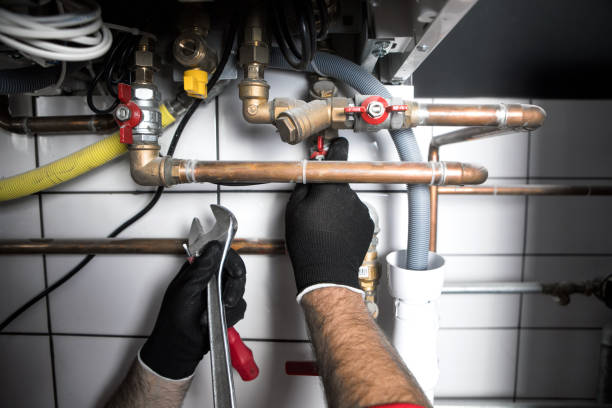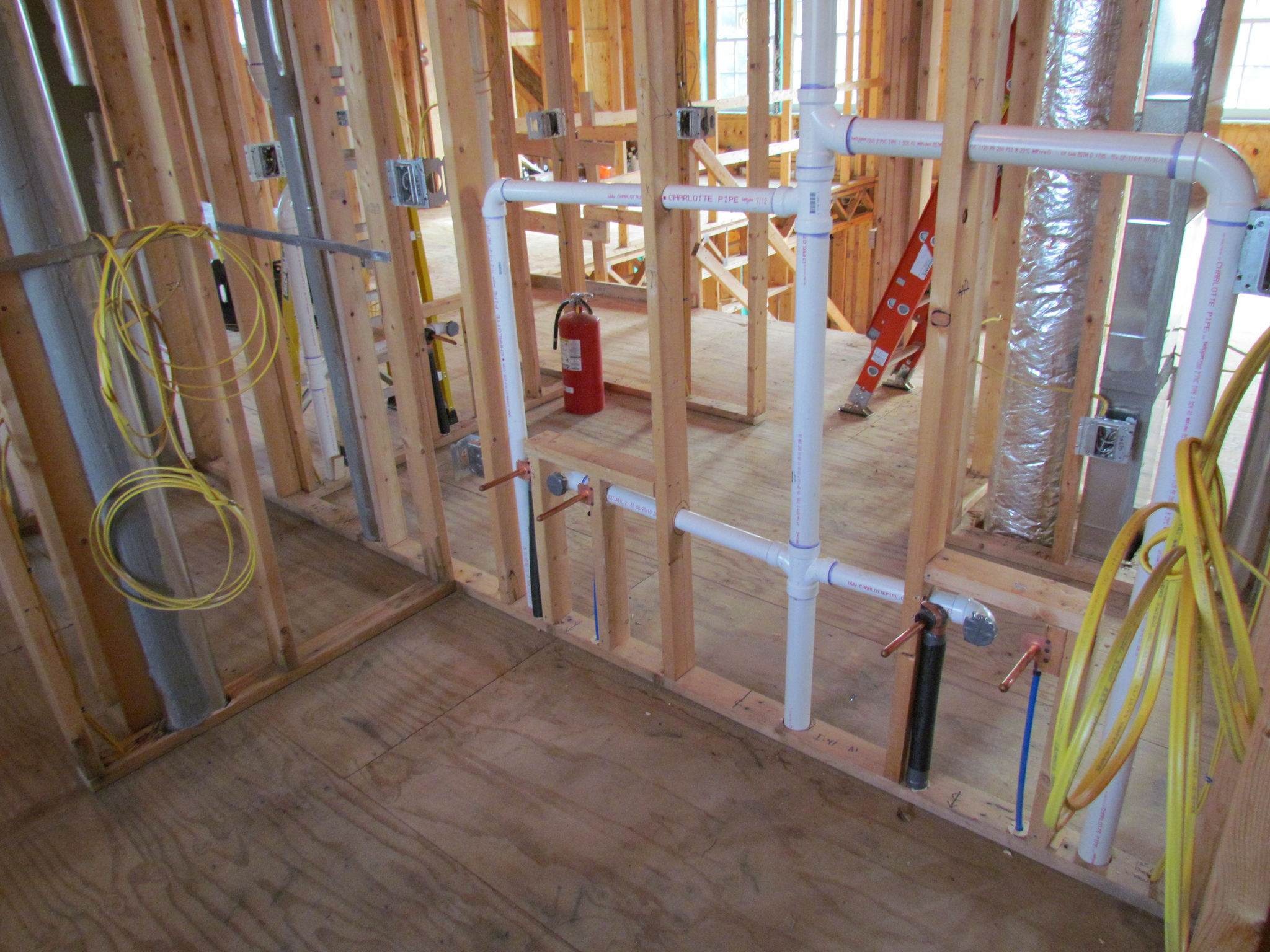The Complete Guide to Your House's Plumbing System Anatomy
The Complete Guide to Your House's Plumbing System Anatomy
Blog Article
What are your opinions with regards to Understanding Your Home's Plumbing Anatomy?

Understanding how your home's pipes system functions is essential for every homeowner. From supplying tidy water for alcohol consumption, food preparation, and showering to securely eliminating wastewater, a well-kept pipes system is vital for your family's health and wellness and comfort. In this extensive overview, we'll check out the intricate network that makes up your home's pipes and deal ideas on upkeep, upgrades, and dealing with usual problems.
Introduction
Your home's pipes system is more than simply a network of pipelines; it's a complex system that guarantees you have access to tidy water and effective wastewater elimination. Knowing its parts and how they interact can help you protect against costly repair services and guarantee whatever runs smoothly.
Basic Parts of a Pipes System
Pipelines and Tubing
At the heart of your pipes system are the pipes and tubing that lug water throughout your home. These can be made from numerous materials such as copper, PVC, or PEX, each with its benefits in terms of longevity and cost-effectiveness.
Fixtures: Sinks, Toilets, Showers, and so on.
Fixtures like sinks, bathrooms, showers, and bath tubs are where water is made use of in your home. Comprehending exactly how these components connect to the plumbing system aids in diagnosing issues and intending upgrades.
Valves and Shut-off Factors
Shutoffs regulate the flow of water in your pipes system. Shut-off shutoffs are essential during emergencies or when you require to make repairs, allowing you to isolate parts of the system without interfering with water circulation to the entire home.
Water System
Key Water Line
The main water line links your home to the community water or a private well. It's where water enters your home and is distributed to various components.
Water Meter and Pressure Regulator
The water meter steps your water usage, while a pressure regulator makes sure that water moves at a safe pressure throughout your home's plumbing system, preventing damage to pipes and fixtures.
Cold Water vs. Warm water Lines
Recognizing the difference in between cold water lines, which provide water straight from the main, and warm water lines, which lug warmed water from the water heater, aids in troubleshooting and planning for upgrades.
Drain System
Drain Water Lines and Traps
Drain pipelines lug wastewater far from sinks, showers, and toilets to the sewage system or septic tank. Traps protect against sewage system gases from entering your home and likewise trap debris that could cause clogs.
Ventilation Pipes
Ventilation pipes enable air into the drain system, stopping suction that might slow down drain and trigger catches to vacant. Correct air flow is necessary for keeping the honesty of your pipes system.
Relevance of Correct Drain
Making sure appropriate drain prevents backups and water damages. Regularly cleansing drains pipes and preserving traps can protect against costly repairs and extend the life of your pipes system.
Water Heater
Kinds Of Hot Water Heater
Hot water heater can be tankless or standard tank-style. Tankless heating units heat water as needed, while storage tanks keep heated water for prompt usage.
Updating Your Pipes System
Reasons for Updating
Upgrading to water-efficient fixtures or replacing old pipelines can enhance water high quality, decrease water bills, and boost the value of your home.
Modern Pipes Technologies and Their Advantages
Explore modern technologies like wise leak detectors, water-saving toilets, and energy-efficient water heaters that can save money and lower ecological effect.
Price Considerations and ROI
Compute the ahead of time expenses versus long-lasting savings when taking into consideration plumbing upgrades. Many upgrades spend for themselves with reduced energy costs and fewer fixings.
How Water Heaters Attach to the Plumbing System
Recognizing how hot water heater connect to both the cold water supply and warm water circulation lines assists in diagnosing concerns like insufficient warm water or leaks.
Upkeep Tips for Water Heaters
On a regular basis purging your water heater to get rid of debris, examining the temperature level settings, and checking for leaks can expand its life expectancy and boost energy performance.
Usual Plumbing Issues
Leaks and Their Causes
Leakages can occur because of maturing pipes, loosened fittings, or high water stress. Dealing with leaks promptly avoids water damages and mold and mildew growth.
Blockages and Obstructions
Clogs in drains pipes and toilets are commonly brought on by flushing non-flushable products or a buildup of grease and hair. Using drain screens and being mindful of what goes down your drains pipes can avoid obstructions.
Indicators of Plumbing Issues to Expect
Low water pressure, sluggish drains, foul odors, or uncommonly high water costs are signs of prospective pipes troubles that ought to be addressed without delay.
Plumbing Upkeep Tips
Routine Evaluations and Checks
Arrange yearly plumbing examinations to capture problems early. Try to find indications of leaks, deterioration, or mineral buildup in taps and showerheads.
DIY Maintenance Tasks
Basic jobs like cleansing tap aerators, looking for toilet leakages using dye tablets, or insulating revealed pipes in cold climates can protect against significant plumbing issues.
When to Call an Expert Plumbing Technician
Know when a pipes issue needs specialist competence. Trying complex fixings without correct knowledge can cause even more damage and greater fixing expenses.
Tips for Lowering Water Usage
Basic habits like fixing leaks promptly, taking shorter showers, and running complete lots of washing and recipes can preserve water and lower your utility bills.
Eco-Friendly Plumbing Options
Take into consideration lasting plumbing materials like bamboo for flooring, which is durable and environmentally friendly, or recycled glass for counter tops.
Emergency Preparedness
Steps to Take During a Pipes Emergency situation
Know where your shut-off shutoffs lie and just how to shut off the water in case of a burst pipe or major leak.
Relevance of Having Emergency Contacts Convenient
Maintain get in touch with information for local plumbing professionals or emergency situation solutions easily available for fast reaction throughout a plumbing crisis.
Ecological Effect and Conservation
Water-Saving Fixtures and Home Appliances
Installing low-flow taps, showerheads, and bathrooms can considerably lower water use without compromising performance.
Do It Yourself Emergency Fixes (When Relevant).
Momentary solutions like utilizing duct tape to spot a leaking pipe or positioning a container under a trickling faucet can minimize damages up until a specialist plumbing gets here.
Conclusion.
Comprehending the makeup of your home's plumbing system equips you to keep it efficiently, conserving time and money on repair services. By following regular upkeep regimens and remaining informed concerning modern plumbing innovations, you can ensure your plumbing system runs effectively for years to find.
HOW YOUR PLUMBING SYSTEM WORKS
Which Pipes Do What?
Blue lines = fresh water supply entering the building Red lines = hot water supply entering the building Grey lines = pipes carrying waste away from the building and venting pipes carrying gases away from the building (through the roof) YOUR MAIN PLUMBING SYSTEMS
There are two main plumbing systems that support your home s basic plumbing needs one that brings clean water into your home, and one that sends dirty water away from your home. Connected to the toilet, bath, shower, and other faucets in your home, these two systems keep your water flowing in the right directions.
ACCESSING FRESH WATER
Fresh and clean water is brought into your home through the main water supply line . Filtered through one pipe, this water is pressured to flow into the various fixtures in your home at any given time.
This water can be sourced from a well located on your property, a pond or river (mostly cottages), or, as in most cases, from the city s municipal water treatment centre. However, it is important to note that water that is untreated, such as the water siphoned from ponds or rivers, may not be safe to drink. Personal water supplies always need to be treated for hardness and contaminants before consumed.
MUNICIPAL WATER SUPPLIES
Improve taste and odour Remove sediment Eliminate hardness Reduce chlorine COLD WATER SUPPLY VS. HOT WATER SUPPLY
Cold water flows into your home or building through the service line, which then distributes hot or cold water to your fixtures. This line is most commonly run through a central column that runs floor to floor. Hot water runs in short and straight pipes as the longer the pipeline, the more heat that will be lost in the transfer. Having shorter pipes also allows residents to access hot water more quickly.
WASTE WATER SYSTEM
Your wastewater system is divided into two parts pipes that send wastewater away from your home and venting pipes that send sewer gas away from your home. Sewage water travels through pipes that flush the water and waste towards local sewers that are operated and managed by your city or town. Most sewer systems rely on gravity to move the wastewater to where it needs to go.
The further away from your toilet or sink, the larger wastewater pipes become. This allows for waste to be disposed of from various parts of your home or business at once without pipe blockages. The angle and flow of these pipes are also essential for keeping your waste pipes clear of build up.
https://harrisplumbing.ca/how-your-home-plumbing-system-works/

We were introduced to that report about Plumbing Installation 101: All You Need to Know from someone on a different blog. Enjoyed reading our blog entry? Please quickly share it. Let another person locate it. We recognize the value of your readership.
Contact Us Now Report this page